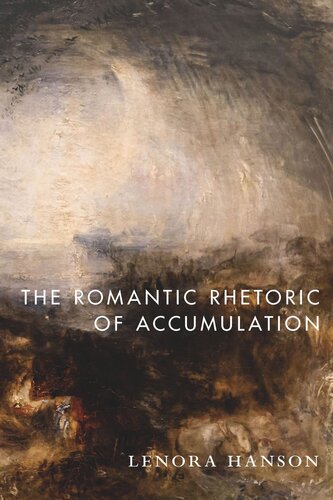

Most ebook files are in PDF format, so you can easily read them using various software such as Foxit Reader or directly on the Google Chrome browser.
Some ebook files are released by publishers in other formats such as .awz, .mobi, .epub, .fb2, etc. You may need to install specific software to read these formats on mobile/PC, such as Calibre.
Please read the tutorial at this link: https://ebookbell.com/faq
We offer FREE conversion to the popular formats you request; however, this may take some time. Therefore, right after payment, please email us, and we will try to provide the service as quickly as possible.
For some exceptional file formats or broken links (if any), please refrain from opening any disputes. Instead, email us first, and we will try to assist within a maximum of 6 hours.
EbookBell Team

0.0
0 reviewsThe Romantic Rhetoric of Accumulation provides an account of the long arc of dispossession from the British Romantic period to today. Lenora Hanson glimpses histories of subsistence (such as reproductive labor, vagrancy and criminality, and unwaged labor) as figural ways of living that are superfluous—simultaneously more than enough to live and less than what is necessary for capitalism.
Hanson treats rhetorical language as an archive of capital's accumulation through dispossession, in works by S.T. Coleridge, Edmund Burke, Mary Robinson, William Wordsworth, Benjamin Moseley, Joseph Priestley, and Alexander von Humboldt, as well as in contemporary film and critical theory. Reading riots through apostrophe, enclosure through anachronism, superstition and witchcraft through tautology, and the paradoxical coincidence of subsistence living with industrialization, Hanson shows the figural to be a material record of the survival of non-capitalist forms of life within capitalism. But this survival is not always-already resistant to capitalism, nor are the origins of capital accumulation confined to the Romantic past. Hanson reveals rhetorical figure as entwined in deeply ambivalent ways with the circuitous, ongoing process of dispossession.
Reading both historically and rhetorically, Hanson argues that rhetorical language records histories of dispossession and the racialized, gendered distribution of the labor of subsistence. Romanticism, they show, is more contemporary than ever.